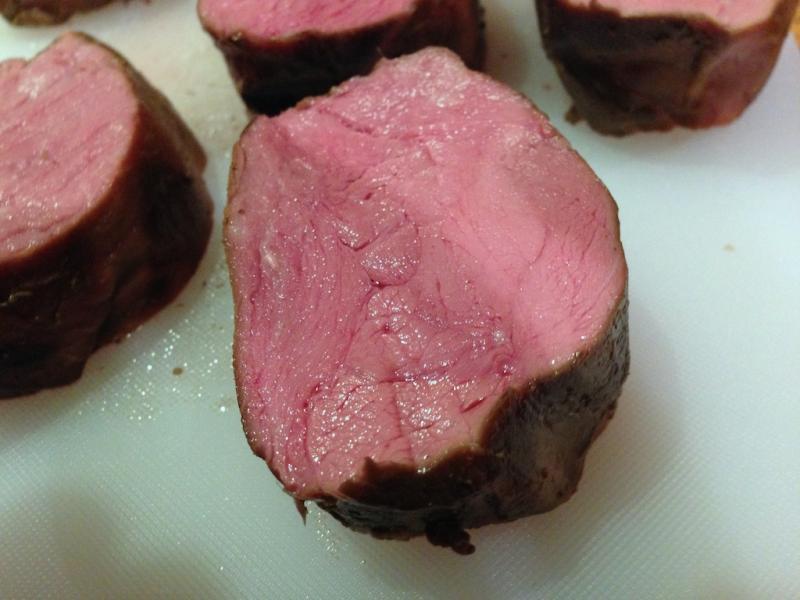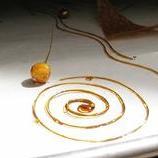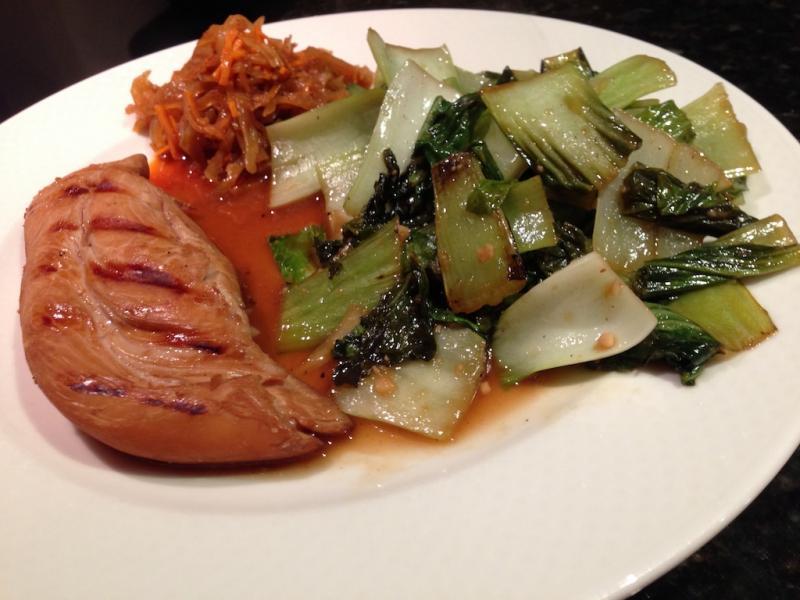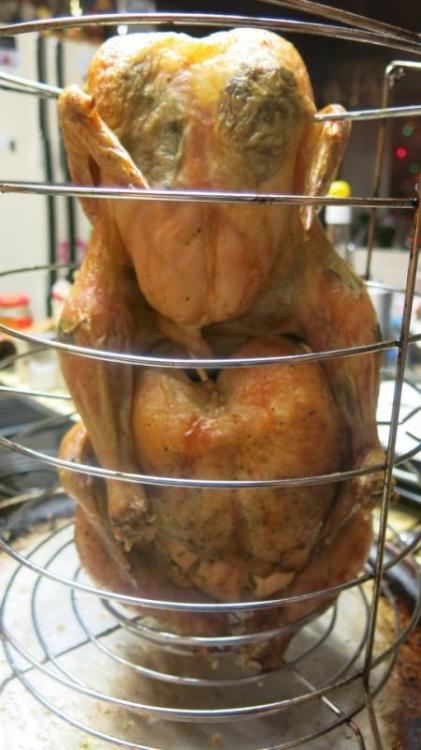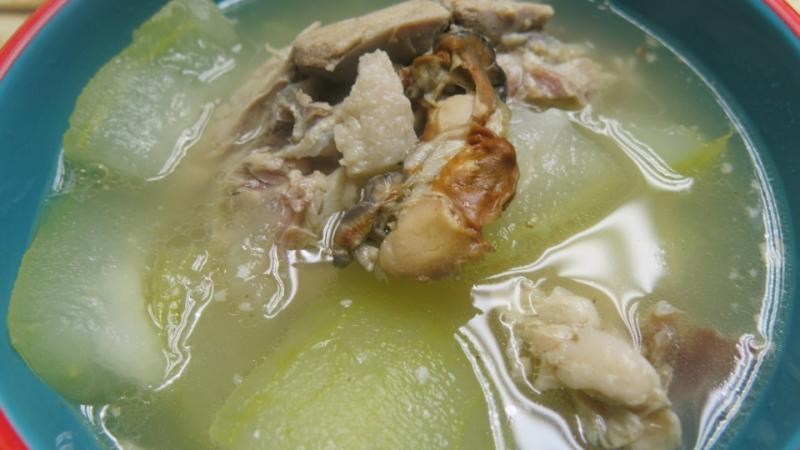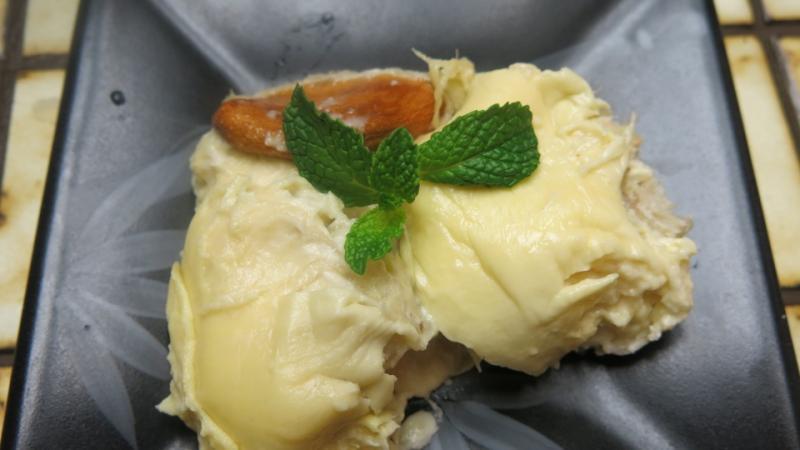Search the Community
Showing results for 'wok'.
Found 5,149 results
-
I'm going to give this a try this weekend -- thank you very much! Follow up question -- do you think the places like pasta stations and stir fry shops pre-cook their broccoli and carrots in a similar fashion to your first steps, or do they really manage to Wok them up in just a few minutes? Trying to decide how much advance prep I need to do vs on the spot cooking.
-
I had to read that several times to see that you'd written not non-stick. ;-) I think that most soup and stew pots do not have non-stick interiors, but I know of some exceptions; my camping soup pot is nonstick because it's lightweight and I picked it up for a song at a garage sale. I still use a metal ladle, because the ladle doesn't scrape the bottom of the pot. At home I use stainless steel pots. I can see the value of a plastic / melamine ladle to protect the surface of, say, a nonstick shallow pan or wok containing a thick sauce. Maybe others will chime in here to explain their use of plastic ladles.You also asked about my design criteria on turners. I'm waiting until I can post a few pictures or sketches, to make everything clear; it'll be a day or three. :-)
-
I've been wanting to try this out for a while. It worked extremely well. Took inner skirt steak and trimmed off all non meat (membrane, etc). I then oriented them in parallel and doused them in a transglutaminese slurry. Rolled the product in PVE kitchen plastic to resemble a fillet and left to set in the refrigerator. I then vacuum sealed it and froze the product (related to time to conduct experiment rather than part of the process). Cooked the meat sous vide at 57C for 32 hours. Removed from bag (reserving juices for a future sauce). Patted dry and cut into medallions. The meat at this stage is pictured below. Heated cast iron skillet to extremely hot on wok burner. Rubbed surface of meat with olive oil and sprinkled with sea salt then seared before serving. Flavour was exceptional, as you'd expect. Because the fibers were aligned along the cut it was easy to slice through. Texture was toothsome but not chewy. A winner all around (except for trimming the meat, which was fiddly and time-consuming)
-
I'm thinking a late summer harvest theme. Drink: Daisy Buchanan (cheat: make it as a punch with white wine instead of champagne) For the vegetarians, I often take a vegetable biryani to Thanksgiving meals for vegetarians. It's vegan, so everyone will eat it. (don't make the mistake of thinking that the vegetarians will eat dead animals like fish, or even eggs, unless they tell you otherwise) It's good, and meat eaters take home leftovers and ask for the recipe. I make it with a modified fried rice method: The day before: Cook some Jasmine brown rice (salted water) and refrigerate it. Cooks some garbanzo beans, from dry beans, in water that has salt and cumin in it. Refrigerate when done. Saute carrots in oil with lots of ginger, stopping when they are still a little firm. Keep going with whatever vegetables you have at hand, cook each in a different spice that is compatible with a mild curry but slightly undercook it. On the day of, saute a diced onion and the rice in oil with a little curry paste in it and pour into a chafing dish/hotel pan. (It's supposed to be mildy fragrant with spice.) Heat up each of the vegetables one by one in the same pan/wok and pour into the chafer. When finished, stir to distribute evenly and keep warm. This will keep well covered for hours. Another entree, one that could be made with meat (as well as meatless with beans) and rice, or barley, bulghur, etc. is a medley of stuffed roasted vegetables. The filling can be made days in advance, and softer vegetables (eggplant, bell pepper, zucchini) will roast very quickly so you're mostly just heating them through. You can take this in many directions depending on how you spice it: Middle East, India, French, etc. They can have a sauce (cabbage rolls) or not. (when I do cabbage rolls, I cook red lentils mixed with jasmine or basmati rice and add lemon zest and juice to the water for the vegetarian rolls to give them a bright flavor) Sides could include roasted vegetables, like eG's popular roasted cauliflower, baked potatoes with a toppings bar, roasted root vegetable medley, etc. Make sure to have a great salad. Perhaps a mini salad bar would be in order, with a couple of dressing choices and toppings like sunflower seeds and nuts. The vegetarians will eat the salad, and it can be a fallback for anyone on a special diet. Fresh fruit is also appreciated for those who might have issues with dessert. That said, sorbets are a dessert that most people will eat without arguing over whether or not there are eggs and/or dairy in the shortcake, etc.
-
It almost certainly the size of the pan as against the size of the electric ring / gas burner. For the paella pan to be authentic it should be quite large, even if it is only described as a four portion pan, its base will be to large for the heat to be distributed evenly. Apart from buying a never oven with a large (wok style) heat source you could try buying a very large paella pan and positioning it over 2 - 3 burners. The only other thing I can think of is to stir the rice once or twice during cooking to try and get it evenly spread. Not ideal as you may well loose that lovely crispy effect on the bottom. Andrew
-
Garlic-black bean pan-fried fish – Partly fry fish fillets (haddock) and remove. Stir-fry a chopped head of garlic, knob of ginger, salted fermented black beans, and cilantro stems. Add dark soy sauce, rice wine, sugar, black pepper, and cayenne, and reduce. Remove half of the black bean mixture, return fish to the wok, cover with the remaining mixture, and cook until done. Garnish with cilantro. Had a heck of a time keeping the haddock from flaking to pieces. Need to use a sturdier fish next time. Served with jasmine rice and salad.
-
I havent tasted your 'item' but Im betting that the flavor you are tasting is Maillard'ed from the very hot wok they might use: green onion, pork, shrimp etc after all these places dont put the time and $$$ as say restaurants such as Daniel. the better ones make great stuff. doubt there in anything too complicated in what they do that being said:: maybe they never clean the Wok get a hit of last years shrimp ... in every bite ! BTW its perfectly fine to like your Take Out's Soy-ish-sauce just either find the supplier and by a few gallons or buy some from the T.O. Done.
-
FC I know exactly what you are talking about. that soy is soy-like-sauce if you want to make maifun, look for a 'good' singapore noodle Rx and just dont add the curry powder. some of the flavor comes from the Wok-ing of the pork and shimp and green onions etc Im lucky I like the curry version and get it when I can in ChinaTown. these S.Noodles are not available in Singapore !
-

Copper vs Stainless Steel Clad Cookware: Is it worth the $$$?
nickrey replied to a topic in Kitchen Consumer
I'm sure that we've discussed this previously but one factor to keep in mind is the difference between a commercial range and a home cooker. Commercial ranges bathe the bottom of the pan in flame so there is little need for the conductive efficiencies conferred by using copper. At home, however, where the flame contact is more likely to be localised to a small section of the pan the conduction of copper can, and does, make a huge difference in evenness and speed of cooking. I use copper and love it but if I'm using pans other than copper and not on commercial stove, I move to my wok burner ring that has a wider spread of heat. -
Early Thai dinner before elder son headed back to college. Cucumber relish with brown rice vinegar, brown sugar, Thai chiles, cilantro, and crushed pistachio nuts Clear soup with pork, garlic, and spinach – Pork meatballs made with garlic paste, white pepper, soy sauce, and a little sugar. Broth was a mix of chicken stock and Mrs. C’s smoked pork stock. Steamed snapper – Whole red snapper, briefly fried in the wok and then steamed with slivered ginger, sliced garlic, Thai chilies, scallions, soy sauce, salt, and a little sugar. Finished with a squeeze of lime and served with jasmine rice.
-
Continued from Book Review #1: “Honey, there is the huge box and It weighs a ton; I dragged it into the garage,” my wife tracked me down while I was on the rental return bus to the air terminal. “What is it?” “I don’t know,” I lied‚ “could be anything.” “You have no idea what you ordered that is that big and heavy and takes up half the garage [exaggeration]?” I heard paper crumbling as she whipped out her Spanish inquisition checklist of questions. “Gee honey, almost to the security checkpoint. Got to go, see you tonight, late”. I listened for her final protest and then pressed end. On to the Book: Chapter 7 is positively the best set of explanations and pictures on the various methods of cooking. Starting with grilling and ultimately ending with smoking, consider this chapter like a walking tour of your favorite art museum, complete with awesome cut-away pictures and narratives from the artists themselves. There is even a touch of math in these pages where the authors show you how to calculate the sweet spot of your grill and broiler. Check out the Girardet Method (page 24-25); this yummy method of fish preparation is very tasty and oh so easy. In Power to Burn, page 52, I decided that real wok cooking was not a great idea for my kitchen; I couldn't sneak the hood and sprinkler system past my wife. I never really understood why my wok dishes didn’t turn out authentic until I read the chapter on stir frying. And, though I have watched things boil hundreds of times, I must confess, I never understood “The Birth of the Bubble,” see page 65. In pan frying, we learn that “the thickness of the pan matters more than the material.” Bad news for consumer premium pan suppliers - buy copper only for the looks, you can get performance in many other ways. Also, match your flame with pan and you’ll get better efficiency. Most of us know these things, but it is very interesting to have them laid out, all of it in photographic glory. With a tour through frying and smoking, your tour is complete - fourteen cooking methods surveyed in all. Chapter 8 is about cooking with moist air, for example a combi oven. Though I appreciate the distinction of combining temperature and humidity, this information is useful for the professional chef and is not within reach for but the very few home chefs with infinite budget and room. Moving on to microwaves, there two things that I absolutely didn’t expect to learn from this sophisticated text: how to do irresponsible things in a microwave (like plasma grapes), and how to measure the speed of light with a microwave and a cheese slice. If James Maxwell (1805) had only had Velveeta and space-saver microwave, just imagine the possibilities! I was eager to finally reach Chapter 9: Cooking Sous Vide. First the defining feature: “…[it is] the fine control of heat that modern timing and temperature-control technology enable.” The sealing and the water bath are all a means to this end. “Cooking sous vide is simple because it eliminates guesswork.” The chapter offers five steps: prepare, package, set temperature, cook, and finish. The chapter also delves in to details of types of sealers and water baths. Don’t miss the “Why Cold-Shocking Doesn’t Halt Cooking” on page 254.This chapter provides a complete overview of the processes involved. Each popular method of sealing is presented and contrasted along with strategies for chilling and reheating. The coup de grace is a Rosetta stone of sous vide cooking times and temperatures found on page 276-279. The remainder of the volume is a whirlwind tour through techniques to enhance flavor, clarify liquids, dry, and freeze. Unfortunately some (a lot) of the equipment is well outside of the budget of the home chef. But one thing that is very helpful is that the authors go to great pains to identify multiple techniques that can be accomplished in the home kitchen. What do a mouse and a mine shaft have to do with making the best stocks? Well you’ll have to read about it on page 288, and when you do, you’ll change the way you make stock forever. Even the method of preparation is different than what I had expected: see 296-297 for a tidy summary. I won’t recount but do not miss a page. Now, on to finish my story: “It’s a chamber vacuum sealer.” I proudly removed all of the packing flakes that clung to its stainless steel casing, “Ta daa.” It’s not just a sealer; it is a VacMaster VP215, oil pump powered, commercial Vacuum Packing System tipping the scales at 96 pounds. “It’s for Sous Vide cooking.” “That isn’t staying on my counter,” she proclaimed. “Oh nooo, I‚’ll be putting it downstairs,” as I measured how I might fit it into the pantry (not downstairs). Turns out a quick trip to The Container Store and you can buy a rolling table that fits its dimensions very nicely with storage drawers for the bags and other assorted utensils. “Let me just leave it here in the pantry, I have to get someone to help me bring it downstairs, it’s way too heavy for me.” “Un huh,” she sensing the insincerity that I was radiating on the subject. “Maybe in one of those books,” she pointed at the offending Modernist Cuisine collection‚ “there will be a tip on how to move that thing out my kitchen.” I chuckled, “Not in book 2.”
-
jnash85 said: This is because we don't use any humidity for this recipe. We like to still use the combi oven though because it can get a higher temperature and create heat similar to a wok. We call this oven-frying. This allows us to make large batches at a time.
-
Judy said: I did a batch yesterday. 82°C for 8 hours, using pork collar cuts in the brine. Then I pan grill for about 2-3 minutes on all sides. Results: Texture - too soft, fats taste weird and soft Taste - predictably, the taste is obviously more intense due to the brining cum cooking Appearance - you can't tell the difference (compared to wok or oven roasting) after the final charring/grilling phase If I were to do it again, I may need to knock down the temp. I am yet to be convinced though that SV way can make a better Char Siew then the wok. There must be some science to it, but the brine cum oil (half-boiling, half-frying) wok method, along with the final charring (roasting) phase produces such good results. And it is convenient - the meat stays in one place till cooked, along with the resultant sauce. A kilo is done in 45 mins. That said, I am sure the Sv method is useful for those who do not have a wok, proper stove or do not prefer the cooking management needed to keep it moist when roasted in the home oven.
-
FoodCanon said: It will depend on what cut of meat you are using. From your recipe, it does, indeed, seem like this is more of a brine than a marinade. If you have a tough cut that requires a long cook time, you can brine and cook it sous vide at the same time. A more tender cut though would mean that you would have to brine it first and then cook it sous vide. I agree that for the end step, a high heat wok or grill would be ideal.
-
I am experimenting in using Sous Vide to make "Char Siew" a popular Chinese BBQ pork disk where the pork is marinated in sweet/salty sauce and roasted. The cuts are normally tough cuts like pork belly, shoulder etc. It has basically 3 stages: 1. Brining/marinating 2. Braising or slow cooking the meat 3. Charring the meat I am considering using SV method for steps 1 and 2 Wonder whether anyone here has advice or experience on this? The traditional wok way of making it is documented in my blog here: http://www.foodcanon.com/2011/04/auntie-rubys-char-siew-revisited.html http://www.foodcanon.com/2011/03/auntie-rubys-char-siew-this-food-blog.html
-
So, I went to SLT today, and they only had the grill pans and "chef pans" (what a stupid name, but basically similar to a flat bottomed wok). They searched other SLTs in the DC area and none of them had a normal, 10" pan. Turns out the entire line has been on clearance since the summer. Also, it turns out this line is carbon steel. Are the de Buyer Mineral pans steel, or iron? They say 99% pure iron, but of course, that is the main component of steel....
-
Would you believe that in almost six years of sous vide cooking, I've never done a rack of lamb? Tonight was the night. I double bagged the lamb with tough plastic from the original packaging over the bone to stop it from ripping the bag. Lamb was cooked at 52C (125.6F) for 52 minutes. I then dried the lamb and then rubbed grapeseed oil onto it and salted the meat. The lamb was seared over a cast iron frypan that had been on the top heat of my wok burner for five minutes. You can see the sear and the cooking that this led to as a band on the right hand side and bottom (top part) of the meat in the picture. It was quite possibly the best lamb I've ever had. Will be doing this again. It was served with some charred vegetable ratatouille.
- 584 replies
-
- 10
-

-
Who cares? I do. I'm with you about 99.9% Shel. When it comes to kitchen equipment and cookware, I have gradually concluded that--with some qualifications--vintage is better. IME, this is certainly true when it comes to copperware, butcher blocks, knives, small appliances (notably toasters and blenders). If you retreat about 40-50 years in the Wayback Machine, you can find some quality pieces. What a mystery--they seem to be US- and European-made! Two years ago, I installed a 1905 solid-fuel range to put under my tinned copper, and I couldn't be happier. Stir-fried with wok hei last night, AAMOF.
-
Chicken breast marinated in Teriyaki sauce with ginger and garlic, cooked sous vide at 65C for an hour then seared on a grill pan over high heat. Served with wok seared bok choy in oyster sauce and home-made kimchi [adapted from home-made sauerkraut (see this post)].
-
Update. The pan is still a lot uglier than it was before this incident, but I expected it to get nasty looking over time, so whatever. Vigorous scrubbing removed the bits of burner that stuck to the pan and other ashy crusty crap, and I got it back to a relatively smooth steel surface. It now looks like a very used pan, rather than a destroyed one. However, it is not quite as smooth as when new, nor is the inside (post seasoning, see below) as smooth as the outside of the pan. Also, to my relief, it appears to not be warped. I re-did the seasoning, no oven this time, but maybe 5+ thin coats of flax oil on the stove, plus 3 rashers' worth of very fatty bacon. After this, it appears well seasoned, like an old wok or something, but it isn't quite as glass-smooth as before, and has a very slight texture. That being said, I seared 4 turkey thighs today, both skin side and meat side, and NO sticking and yet again they glided around. I haven't tried an egg, but the Turkey experience was very reassuring. So, bottom line, these De Buyer pans are kind of indestructible! One odd note - some fluff from the towel got into the pan and baked under one of the coats of seasoning. I couldn't remove it except with a metal implement (tongs I think), which gouged the seasoning and revealed, to my surprise.....really light, raw-colored bare steel. I thought I had taken it back to bare steel, steel which had been discolored from the heat (as happens to CS in high heat, case in point, woks). What might be going on with that? Does that mean if I really wanted to, I could steel wool the whole thing back to its original condition?
-
I used pre-washed bagged spinach. It didn't say it was baby spinach but it looked like it was. It was separate, cleaned leaves. I did leave it whole. I just dumped one bag in an oiled flat bottomed wok and cooked it over medium heat, covered, until it started wilting, then turned it over and added another bag, turning until it was all cooked down, removed it to a strainer then added one half small onion, diced, two garlic cloves and two tablespoons of butter to the wok and cooked the onion and garlic, then added two tablespoons of flour, cooked it briefly, added about a cup of milk and stirred it until it was thickened. I added the spinach back in; added a pinch of cayenne and a grated a chunk of Romano cheese over it and folded it all together. At some point I salted it too.
-
Welcome to the latest of our eG Cook-Off series. The series has been ongoing since 2004 and has encompassed topics as far ranging as ice cream, composed salads, gels and aspics, pizza, bibimbap, tamales... The index for previous Cook-Off’s can be found here. When I joined eG in 2005 I’d never cooked pork belly - I suspect the only pork belly I’d knowingly eaten had been in the form of bacon! I’ve learned a lot since then - and pork belly is something I’ve added to my rotation in a variety of forms - chicharrón, red cooked pork, steamed, sous vide and deep fried. I have a few recipes set aside for future experiments. I’ve found inspiration in numerous places on eG - Pork Belly, all 11 pages and in every edition of the Dinner thread since the time of it’s inception. It’s a necessary part of cooking with Momofuku, Ivan Ramen and Fuchsia Dunlop among many others. It’s hard to find a previous Cook-Off topic that doesn’t make use of pork belly somewhere (perhaps the ice cream topic!) There seems to be a debate about crispy vs non crispy skin - or even if skin should be on or off. So dig out your woks, your deep fryers, your sous vide setup, your steaming baskets - and let’s show each other what we can do with this lovely porcine cut!
-
Wok shot of farmhouse pork with Anaheim chiles, sliced garlic, and fermented black beans. Also made stir-fried mushrooms and jasmine rice.
-
I bought a hand-hammered CCK pow wok (the kind with the long handle) in Singapore (at a shop called SIa Huat, on Temple Street), and I'll be shopping for a wok burner (probably a small, one-burner wok range) soon (within the next couple of months, when I can afford it). What's different and/or interesting about my burner shopping is that I'll be shopping in Bangkok (where I live) so the brands and types I'll be looking at are likely to be a bit different from the usual options. If i do turn up some nice ones here, and you live in the US, Europe, etc., you might be able to find someone you can order them from and have them shipped. Just be advised that I'm not looking at the type you can safely use indoors... PS: Yep I realize this is an old thread, but I'm sure there are plenty of people out there who are interested in woks and burners but haven't bought one yet.
-
Finally got the Big Easy back from my brother's where we cooked the Xmas turkey for the family gathering. AND, the temperature's back to "tolerable" with no windchill warnings of -50C. Time to satisfy my need for BE chicken! Did two chickens so I'd have lots on hand to share and for lunch. The bottom one was marinated with "chicken rub" by a company called Szeged. I love their Hungarian Hot Paprika, so I thought I"d try their chicken rub. It's pretty basic but it was good. The top chicken is stuffed with Kaffir lime leaves - my favourite. With -18C temperatures, I was able to cook the 2 chickens in 1.5 hours. Did up some mixed vegetables in the wok, seasoned only with no-salt chicken broth. We had some moo gwa (hairy squash) soup with pork and rehydrated oysters about an hour before supper. Dessert was "previously frozen" durian, for which I have developed a craving since our trip to Malaysia! These are not as "aromatic" as the fresh, but they satisfy my need.,, I accidentally ate the little piece of mint with the durian, and it tasted great together!


